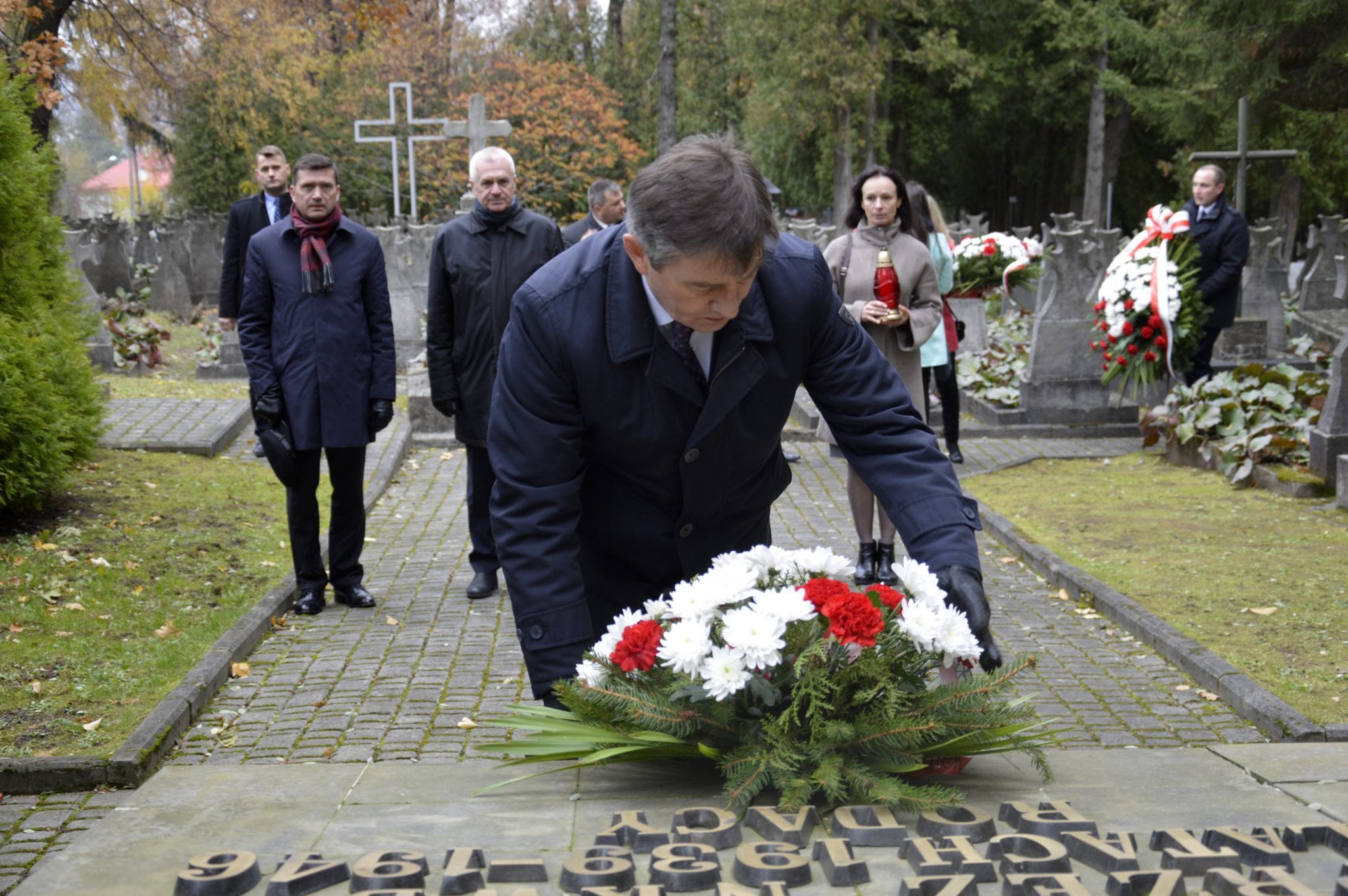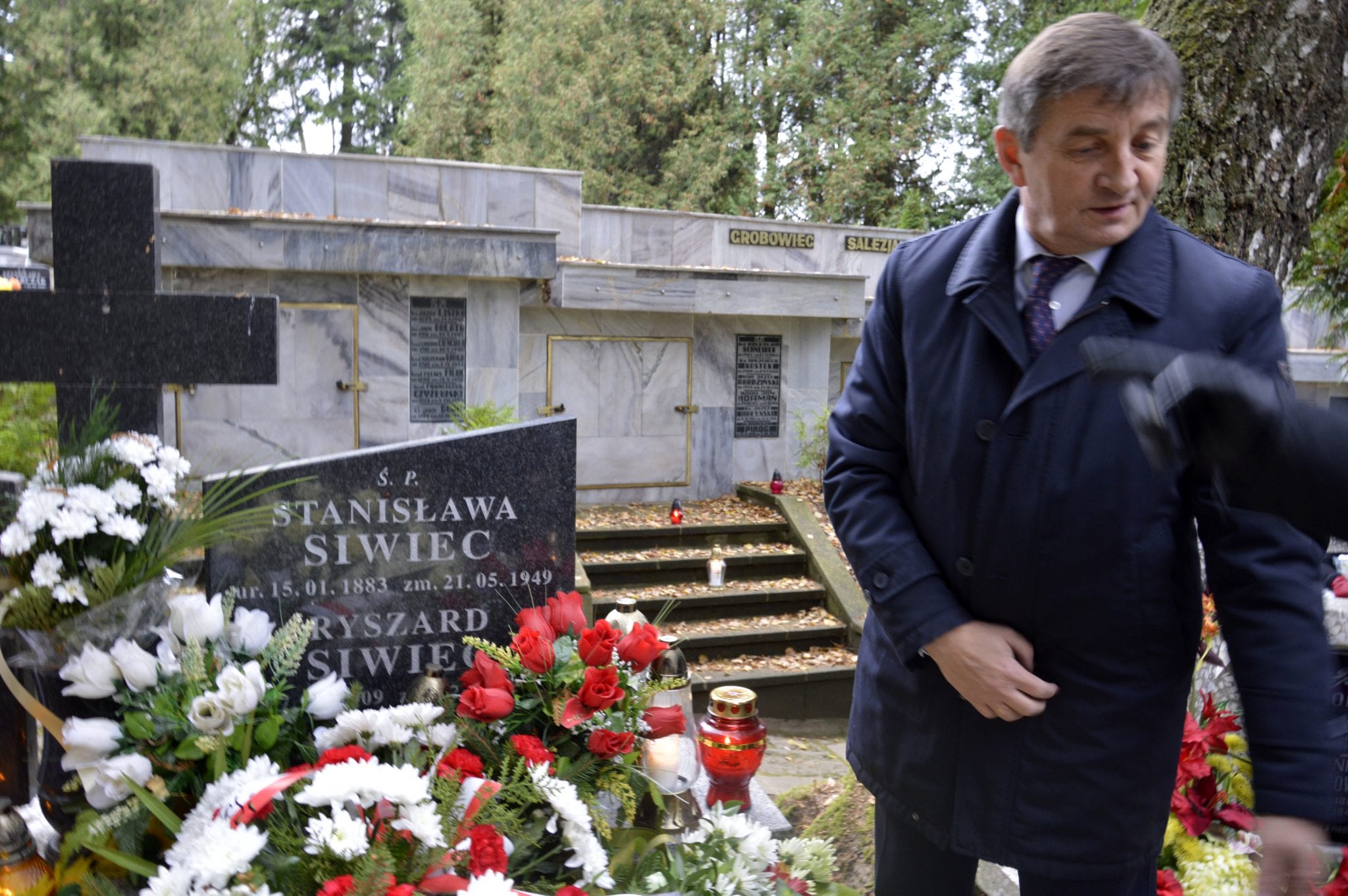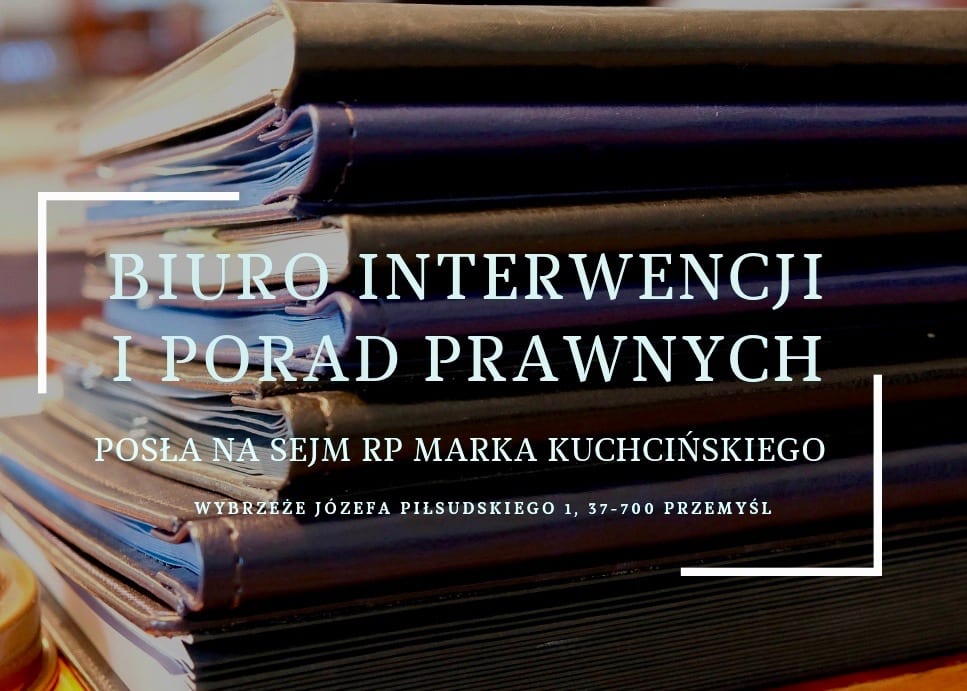Borderlanders murdered by the OUN-UPA, victims of the NKVD, Soldiers of the Home Army, the Przemysl Eaglets, the Outlawed Soldiers - to them, placing wreaths on graves and monuments, Marshal Kuchciński paid his respects. He was accompanied by MP Andrzej Matusiewicz, Przemysl Mayor Robert Choma, Director of the Rzeszow branch of the IPN Dariusz Iwaneczko and Chairwoman of the Przemysl City Council Lucyna Podhalicz.
Crypts of the Przemyśl Archcathedral
Archbishop Ignacy Marcin Tokarczuk Doctor of philosophy, diocesan bishop of Przemysl from 1965 to 1993 (from 1991 to 1992 archbishop ad personam, from 1992 to 1993 archbishop metropolitan), since 1993 archbishop senior of the archdiocese of Przemysl. Knight of the Order of the White Eagle. He taught philosophy and theology at the Higher Seminary in Olsztyn and at the Catholic University of Lublin. As bishop of Przemyśl, despite the lack of permits from the communist authorities, he built churches in the diocese (more than 400 churches and chapels were built during his years as bishop), and supported various social initiatives (including the NSZZ "Solidarity"). For his uncompromising stance in defense of the institutions of the Catholic Church in the People's Republic of Poland, he was repeatedly harassed by the Security Service.
Military Cemetery in Przemyśl
Monument commemorating the Poles from the Eastern Borderlands murdered by OUN-UPA. The inscription on the monument reads: ...If I forget them, You, God...forget me.... In tribute to the Poles murdered in 1943-1945 in Volhynia and Eastern Lesser Poland, also to those who left their hometowns, escaping terror and extermination at the hands of the OUN-UPA on the 60th anniversary of this great tragedy - Compatriots, Przemyśl, July 2003.
AK monument Commemorating the soldiers of the Home Army - the clandestine armed forces of the Polish Underground State during World War II, operating on the territory of the Republic of Poland occupied by Germany and the USSR.
Tomb of the Unknown Soldier
It contains the unnamed remains of a soldier killed in 1918 on the outskirts of Przemyśl during the battle of Nizankowice. The inscription on the grave slab reads: To the Unknown Soldier Compatriots 31 V MCMXXV
Pomnik commemorating Poles from the Eastern Borderlands murdered by the NKVD It commemorates Poles from the Eastern Borderlands who were murdered by the NKVD. The inscription on the monument reads: To Poles from the Borderlands murdered by the NKVD in 1939-1946
Legionnaires' Monument An obelisk dedicated to fallen Polish Legionaries, which was moved to the Military Cemetery from the Main Cemetery. The inscription on the obelisk reads: To the Fallen Polish Legionaries 1914-1918 on the 70th anniversary of Poland's independence, through the efforts of the Society of Friends of the City and Region, this commemorative obelisk was saved from destruction, restored and erected in a new place.
Alicja Wnorowska "Eve, Irena Szajowska "Hanka" and Maria Grzegorczyk worked for the Przemyśl Intelligence Brigades. By mid-1946, they were handing over plans of operational activities, lists and photographs of officers in offices, lists of persons prosecuted by appointment letters and wanted for underground activities, excerpts from the protocols of interrogation of the arrested, personal data and tasks of the agents, rosters of prisoners, as well as reporting documents and the scheme of operation of the WUBP. Wnorowska was sentenced to death, commuted due to her advanced pregnancy to life imprisonment. Grzegorczyk was sentenced to life imprisonment. Szajowska received a sentence of 15 years in prison.
Alexander Dworski Polish social activist, lawyer, member of the Council of State and the Galician National Sejm, long-time mayor of Przemyśl. He established the Communal Savings Bank, and on his initiative the Union of Galician Cities was founded. During his tenure, schools in Przemyśl were expanded, water supply was established, electrification of the city began, and a Brother Albert shelter for the homeless and a "Home for the Homeless and Work for the Elderly" were built. He was chairman of the hospital committee, on whose initiative a general hospital was built. He was awarded the Commandery of the Order of St. Gregory by Pope Leo XIII and the Order of Francis Joseph.
Cemetery of Austro-Hungarian Soldiers killed in 1914-1918 in the battles for the Przemyśl Fortress
Monument/grave of the Eaglets of Przemysl
Fallen in the defense of the Eastern Borderlands in 1918. Stanislaw Artwiński - serviceman of the University, age 24 (second lieutenant of the Polish Army), Tadeusz Durkacz - 7th grade student, age 17 (soldier of the Polish Army), Tadeusz Kedzierski - serviceman of the University, age 18 (soldier of the Polish Army), Józef Kedzierski - student of the 7th grade, age 18 (soldier of the Polish Army). University, age 18 (Polish Army soldier), Jozef Kedzierski - 8th grade student, age 18 (Polish Army soldier), Waclaw Motyka - 8th grade student , age 17 (Polish Army platoon sergeant), Stanislaw Osostowicz - 7th grade student, age 17 (Polish Army corporal), Wladyslaw Ryz - 8th grade student, age 19 (Polish Army soldier), Marian Schultz - 8th grade student, age 19 (Polish Army soldier), Alfons Różycki - 4th grade middle school student, age 18 (single. WP volunteer), Nikodem Sozanski - graduate of the Real School, age 23 (WP volunteer unit), Ferdinand Nowak - student of the National Merchant School, age 15 (WP soldier), Mieczyslaw Zaleszczyk - student of the National Merchant School, age 17 (WP soldier), Adam Płonka - student of the 7th grade of the middle school, (platoon unit of the 37th P. WP).
Ryszard Siwiec
Home Army soldier, philosopher, accountant from Przemyśl. Protesting the invasion of Czechoslovakia, he self-immolated on September 8, 1968, during the national harvest festival at the Tenth Anniversary Stadium in Warsaw in the presence of party chiefs, diplomats and 100,000 spectators.
Major Wladyslaw Koba "Rak", "Marcin", "Tor", "Zyla" (1914- 1949), officer in the regular service of the Polish Army and the Home Army, activist of the Freedom and Independence Association. He served in the 3rd Leg Leg. pp. in Jaroslaw as commander of a platoon, then of a company. In 1939, promoted to the rank of lieutenant, he took part in the 1939 War, including heavy fighting at Pogroszewo, Umiastow and In defense of the Modlin fortress. After the capitulation, he stayed In the transit camp for prisoners of war In Działdów. After his release from the camp, he hid In the vicinity of Jaroslaw. He soon became active in the underground, In December 1939 he was sworn in to the SZP, ZWZ-AK by Sergeant Jozef Cwynar ,,Jedynak", commander of the Jaroslaw- -City Outpost. After some time, he was assigned to the Pruchnik Outpost. He was a training officer in the Jaroslaw AK District. From 1943 he was commander of a diversionary platoon and diversion officer of the District Command. He organized a number of armed and diversionary actions, in which he himself also took part. From June 1944, as a platoon commander, he participated in the fighting beyond the San River as part of the Partisan Grouping of the 39th Home Army pp. After the occupation of the Rzeszow region by the Soviets, he was wanted by the UB and NKVD. By order of the AK HQ, he was promoted to the rank of captain. In the fall of 1944, he was transferred to the Przemyśl AK District, where he became adjutant of the District Headquarters in early 1945. After the dissolution of the AK, he was Commander of the "NIE" Przemyśl District. He used the clandestine name Marcin Gruda, and worked as an accountant in the PKP road office From September 1945, he was head of the Przemyśl WiN Council, and from Spring to October 1946, he was head of the Przemyśl WiN District. In October 1946, he was transferred to the WiN Rzeszow District Headquarters as deputy head, and from May 4, 1947, he was head of the District. On September 26, 1947, he was arrested in Przemyśl by officers of the Rzeszow WUBP. By a verdict of the WSR in Rzeszow on October 21, 1948, he was sentenced to death, loss of public rights and civil honorary rights forever and forfeiture of property. On 5 I 1949, the NSW in a closed-door hearing upheld the death sentence. President Boleslaw Bierut, in a decision dated 23 I 1949, did not exercise his right of clemency. The sentence was carried out in Rzeszow Castle Prison on 31 I 1949 at 8:30 p.m. Leopold Rząsa and Michał Zygo were killed along with him. The bodies were buried secretly at the parish cemetery in Zwięccza. The remains were exhumed on September 7, 2015. On February 5, 1992, the Court of the Warsaw Military District issued a decision stating the invalidity of the Judgment of the WSR in Rzeszow of October 21, 1948 and the decision of the NSW of January 5, 1949. Married since June 15, 1940 to Maria Stanisława née Oleszko, a teacher. Had two children: daughter Marta and son Wojciech. Decorated twice with the Cross of Valor (1939, 1944), the Silver Cross of Merit with Swords, the Home Army Cross, the Army Medal four times, the Commander's Cross with Star of the Order of Polonia Restituta. Posthumously promoted to the rank of major. He was buried on September 17, 2016 at Zasan Cemetery in Przemyśl.
TVP3 Rzeszow reports: http://rzeszow.tvp.pl/27542145/oddali-hold-poleglym-zolnierzom-wojska-polskiego-i-ak





